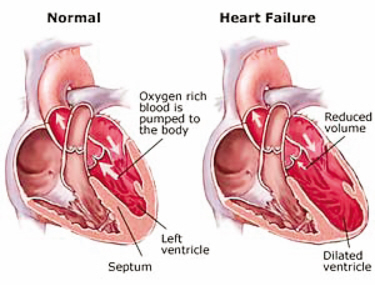Approximately 5.8 million people in the United States have heart failure. Heart failure is a very common condition in seniors and is also known as congestive health failure. This is a condition in which the heart can’t pump enough blood to meet the body’s needs. In some cases, the heart can’t fill with enough blood (diastolic heart failure). In other cases, the heart can’t pump blood to the rest of the body with enough force (systolic heart failure). Some people have both problems. These are heart failure awareness:
How is heart failure diagnosed?
A physician usually diagnoses heart failure based on medical history, physical examination, and diagnostic tests. Most commonly ordered test is an echocardiography which uses sound waves to create a moving picture of the heart. The test shows the size and shape of the heart and how well the heart chambers and valves work.
How is heart failure treated?
Lifestyle changes can make a huge difference in controlling symptoms: limit fluid intake, low salt diet, weight loss (if obese), and smoking cessation. Water pills reduce the fluid build up and blood pressure pills reduce the heart’s workload. For severe heart failure cardiologist recommend an implantable cardioverter defibrillator (ICD) and/or pacemaker to prevent sudden cardiac death. Left ventricle assist device which pumps blood from the heart to the rest of the body has greatly improved quality of life in end-stage heart failure. Heart transplant is a last resort. There are newer experimental treatments on the horizon.
Signs and Symptoms:
- Shortness of breath
- Fatigue
- Swelling in the ankles & feet
- Weight gain (major sign and symptom)
Common Causes:
- Coronary artery disease
- Hypertension
- Cardiomyopathy
- Diabetes
- Heart valve disease
- Arrythmias
- Congenital heart defects



Leave a Reply